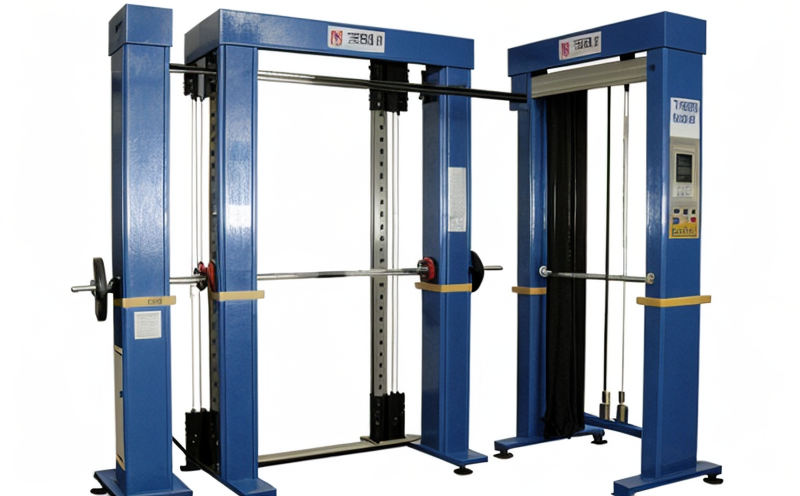ASTM D5034 Breaking strength and elongation of textile fabrics Grab test
The ASTM D5034 standard test method is a critical procedure used in the textile industry to determine the breaking strength and elongation properties of woven, knitted, or nonwoven materials. This test measures how much force can be applied before a fabric sample breaks under grab loading conditions, as well as the amount of extension that occurs during this process.
Breaking strength is essential in ensuring textiles meet safety standards for applications such as work uniforms, industrial garments, and protective clothing. Elongation data provides valuable insights into how fabrics will behave under stress, which can help optimize design choices for comfort, durability, and performance.
The ASTM D5034 Grab test involves placing a specimen in the jaws of a tensile testing machine and applying controlled force until failure occurs. The parameters measured include peak force (breaking strength), maximum elongation at break, and work done during stretching before rupture.
For accurate results, it's crucial to follow strict procedural guidelines outlined by ASTM D5034. Specimens must be prepared according to specific dimensions and orientation relative to the warp and fill directions of the fabric. Pre-conditioning steps ensure that specimens are at their intended moisture content prior to testing.
The test apparatus typically consists of a universal or textile tensile tester capable of applying precise loads along with displacement sensors for measuring elongation accurately. Specimens may vary depending upon the type of material being tested but generally range from approximately 10 cm x 25 cm up to larger sizes suitable for heavy-duty fabrics.
Results obtained from this test provide important information regarding a fabric's resistance to tearing or ripping under tension, which is particularly relevant when evaluating materials intended for use in high-stress environments like construction, automotive manufacturing, and military applications. Compliance with industry standards such as these helps manufacturers ensure product quality while also meeting regulatory requirements.
Understanding the breaking strength and elongation properties of textile fabrics through ASTM D5034 testing is vital for both development teams seeking to innovate new products and quality assurance departments responsible for maintaining consistent performance across production batches. By adhering strictly to established procedures, companies can gain reliable data that contributes significantly towards meeting customer expectations and ensuring long-term success in competitive markets.
Scope and Methodology
| Parameter | Description |
|---|---|
| Test Specimen Size | A rectangular specimen measuring 10 cm x 25 cm, cut perpendicular to the warp direction. |
| Environmental Conditions | The testing environment should be controlled at a temperature of (23 ± 2)°C and relative humidity of (65 ± 2)% RH. |
| Test Machine | A universal or textile tensile tester with a minimum capacity of 10 kN. |
| Specimen Preparation | The specimen shall be conditioned in the testing environment for at least 4 hours before testing. |
| Force Application | Description |
|---|---|
| Initial Force | The force applied to the specimen is increased at a constant rate until it reaches 50% of the expected breaking load. |
| Subsequent Force Increase | The force is then increased at a constant rate until failure occurs, recording both peak force and elongation during stretching. |
| Data Collection | All relevant data points are recorded automatically by the testing machine software. |
Why Choose This Test
- Provides critical insights into a fabric's resistance to tearing or ripping under tension.
- Ensures compliance with international standards such as ASTM D5034, enhancing product reliability and safety.
- Promotes innovation by enabling precise measurement of breaking strength and elongation properties.
- Saves time and resources by providing accurate results that eliminate the need for destructive testing methods.
- Supports quality assurance processes through consistent evaluation of fabric performance across production batches.
Customer Impact and Satisfaction
The ASTM D5034 Grab test plays a pivotal role in ensuring that textile products meet the highest standards of quality, safety, and durability. By incorporating this testing method into their development and production processes, companies can significantly enhance customer satisfaction by delivering superior performance and reliability.
For quality managers and compliance officers responsible for maintaining strict adherence to industry regulations, ASTM D5034 offers a reliable framework for assessing textile properties accurately. R&D engineers benefit from the detailed data provided by this test, allowing them to make informed decisions about material selection and design optimization.
In the procurement department, reliance on ASTM D5034 ensures that only high-quality suppliers are chosen, thereby reducing the risk of substandard materials entering the supply chain. Ultimately, customers receive products they can trust knowing that rigorous testing has been conducted throughout every stage of development and manufacturing.





